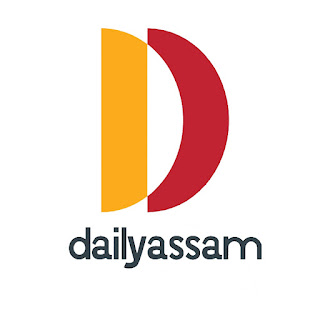Paid Answer (Only 59 Rupees All Chapter)
GU BA 1st Sem Economics Solution
Published@ 2025
CONTENT
👉Text Books Question Answer
👉Text Books PDF
👉MCQ Online Test
👉MCQ Answer
👉Paid Answer (For Membership User)
👉Text Books Question Answer
👉Text Books PDF
👉MCQ Online Test
👉MCQ Answer
👉Paid Answer (For Membership User)
👉Text Books Question Answer
👉Text Books PDF
👉MCQ Online Test
👉MCQ Answer
👉Paid Answer (For Membership User)
👉Text Books Question Answer
👉Text Books PDF
👉MCQ Online Test
👉MCQ Answer
👉Paid Answer (For Membership User)
👉MCQ Online Test
👉MCQ Answer
👉Paid Answer (For Membership User)
ECO-HC-1016
INTRODUCTORY MICROECONOMICS
Course Description
This course is designed to expose the students to the basic principles of microeconomic theory. The emphasis will be on thinking like an economist and the course will illustrate how microeconomic concepts can be applied to analyze real-life situations.
Course Outline
1. Exploring the subject matter of Economics
Why study economics? Scope and method of economics; the economic problem: scarcity and choice; the question of what to produce, how to produce and how to distribute output; science of economics; the basic competitive model; prices, property rights and profits; incentives and information; rationing; opportunity sets; economic systems; reading and working with graphs.
2. Supply and Demand: How Markets Work, Markets and Welfare
Markets and competition; determinants of individual demand/supply; demand/supply schedule and demand/supply curve; market versus individual demand/supply; shifts in the demand/supply curve, demand and supply together; how prices allocate resources; elasticity and its application; controls on prices; taxes and the costs of taxation; consumer surplus; producer surplus and the efficiency of the markets.
3. The Households
The consumption decision - budget constraint, consumption and income/price changes, demand for all other goods and price changes; description of preferences (representing preferences with indifference curves); properties of indifference curves; consumer‘s optimum choice; income and substitution effects; labour supply and savings decision -choice between leisure and consumption.
4. The Firm and Perfect Market Structure
Behaviour of profit maximizing firms and the production process; short run costs and output decisions; costs and output in the long run.
5. Imperfect Market Structure
Monopoly and anti-trust policy; government policies towards competition; imperfect competition.
6. Input Markets
Labour and land markets - basic concepts (derived demand, productivity of an input, marginal productivity of labour, marginal revenue product); demand for labour; input demand curves; shifts in input demand curves; competitive labour markets; and labour markets and public policy.
************************
ECO-HC-1026
MATHEMATICAL METHODS IN ECONOMICS–I
Course Description
This is the first of a compulsory two-course sequence. The objective of this sequence is to transmit the body of basic mathematics that enables the study of economic theory at the undergraduate level, specifically the courses on microeconomic theory, macroeconomic theory, statistics and econometrics set out in this syllabus. In this course, particular economic models are not the ends, but the means for illustrating the method of applying mathematical techniques to economic theory in general. The level of sophistication at which the material is to be taught is indicated by the contents of the prescribed textbook.
Course Outline
1. Preliminaries
Sets and set operations, relations and functions, number system
2. Functions of one real variable
Elementary types of functions: quadratic, polynomial, power, exponential, logarithmic, convex, quasi-convex and concave functions, limit and continuity of functions
3. Differential calculus
Differentiation of a function, Basic rules of differentiation, partial and total differentiation, second and higher order derivatives for single variable, economic applications of differentiation
4. Single variable optimization
Local and global optima: geometric characterization, characterization using calculus: tests for maximization and minimization, applications: profit maximization, cost minimization, revenue maximization
5. Integration of functions
Meaning and significance of integration, basic rules of integration, significance of a constant after integration, applications: derivations of total functions (total cost, total revenue, consumption and saving functions) from marginal functions, consumer’s surplus and producer’s surplus, problems relating to investment and capital formation
*************************
ECO-HG-1016
Principles of Microeconomics–I
Course DescriptionThis course intends to expose the student to the basic principles in Microeconomic Theory and illustrate with applications.
Course Outline
1. Introduction
a. Problem of scarcity and choice: scarcity, choice and opportunity cost; production possibility frontier; economic systems.
b. Demand and supply: law of demand, determinants of demand, shifts of demand versus movements along a demand curve, market demand, law of supply, determinants of supply, shifts of supply versus movements along a supply curve, market supply, market equilibrium.
c. Applications of demand and supply: price rationing, price floors, consumer surplus, producer surplus.
d. Elasticity: price elasticity of demand, calculating elasticity, determinants of price elasticity, other elasticities.
2. Consumer Theory
Budget constraint, concept of utility, diminishing marginal utility, Diamond-water paradox, income and substitution effects; consumer choice: indifference curves, derivation of demand curve from indifference curve and budget constraint.
3. Production and Costs
a. Production: behavior of profit maximizing firms, production process, production functions, law of variable proportions, choice of technology, isoquant and isocost lines, cost minimizing equilibrium condition.
b. Costs: costs in the short run, costs in the long run, revenue and profit maximizations, minimizing losses, short run industry supply curve, economies and diseconomies of scale, long run adjustments.
4. Perfect Competition
a. Assumptions: theory of a firm under perfect competition, demand and revenue; equilibrium of the firm in the short run and long run; long run industry supply curve: increasing, decreasing and constant cost industries.
b. Welfare: allocative efficiency under perfect competition.
**************************
Post ID: DABP001686


.jpg)



